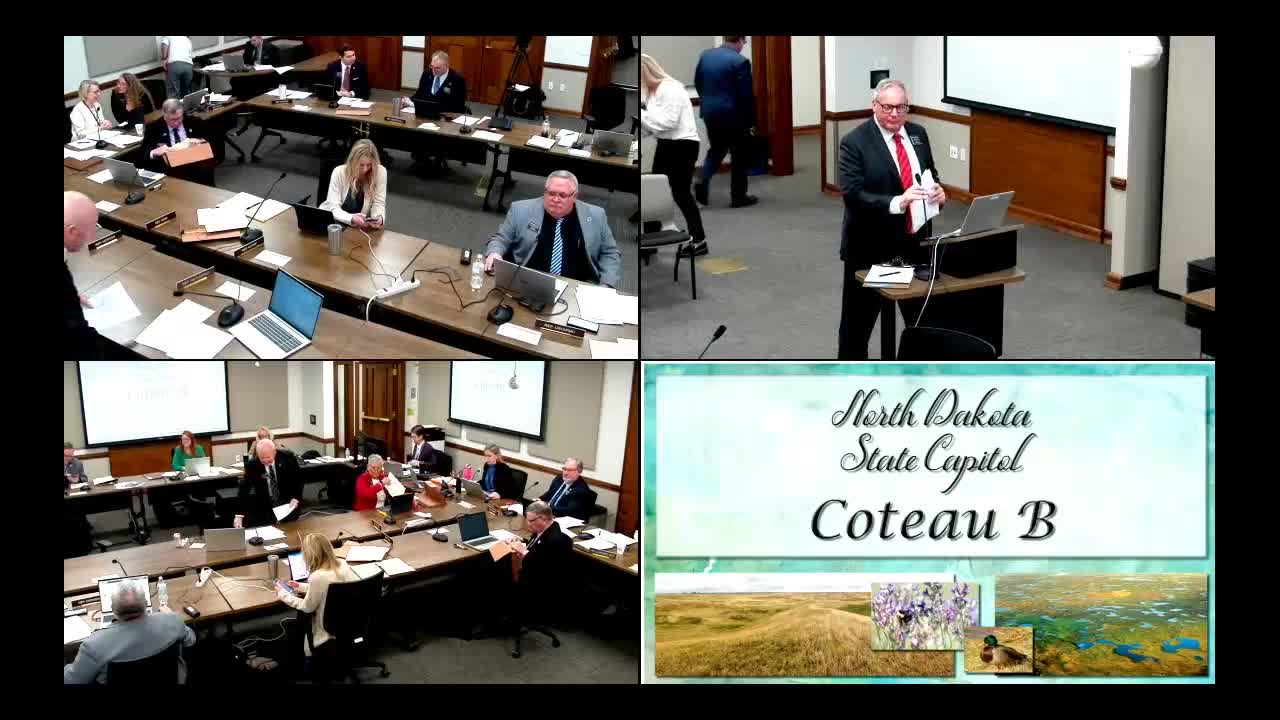House panel hears proposal to use Legacy Fund to offer low‑interest school construction loans
January 15, 2025 | Education, House of Representatives, Legislative, North Dakota
This article was created by AI summarizing key points discussed. AI makes mistakes, so for full details and context, please refer to the video of the full meeting. Please report any errors so we can fix them. Report an error »

Representative Levi Jonas introduced House Bill 1163, which would create a Legacy Fund School Construction Assistance Loan Fund to provide low-interest loans for school construction and to supplement the existing Bank of North Dakota school construction revolving loan fund.
Levi Bachmeier, business manager for West Fargo Public Schools, told the committee the proposal is intended to leverage Measure 3’s expansion of legacy fund investment options to lower interest costs for school construction. Bachmeier provided an illustrative example: a $100 million allocation at a 1% legacy loan rate could produce roughly $40 million in interest savings over the life of those loans compared with higher market rates, he said.
Bachmeier and other witnesses emphasized the bill is designed to complement, not replace, the existing school construction revolving loan fund. The proposal includes indexing loan availability to district size (examples discussed included $10 million per 1,000 students) and allowing callable debt to migrate into the new loan vehicle to capture savings for taxpayers.
Scott Anderson, chief investment officer at the Retirement and Investment Office, and State Treasurer Thomas Beadle testified about fiscal and investment trade-offs. Anderson said independent analysis (using consultant RVK) indicates that directing a portion of legacy principal into low-yield, low-interest loans would reduce expected legacy-fund returns; he estimated a first‑biennium differential investment cost of roughly $115 million and a reduction in expected return from about 6.1% to roughly 5% as an example of the scale of impact. Treasurer Beadle summarized the state’s existing in‑state investment program and noted roughly $450 million had already been invested in-state under current authorizations.
Other witnesses — including a Western Dakota Energy Association representative and members of a school construction coalition — urged the committee to consider facility assessments, equity across districts and the scale of deferred maintenance statewide. Committee members asked whether a $1 billion placeholder in the bill was intended as a cap; witnesses said the $1 billion figure reflects the scale of Measure 3’s expanded authority and is a starting point for discussion rather than a final allocation.
The committee closed the hearing without a vote and signaled further committee work will be needed to define eligibility, per‑district limits, interactions with existing loan programs and fiscal guardrails. No formal action was taken during the hearing.
Levi Bachmeier, business manager for West Fargo Public Schools, told the committee the proposal is intended to leverage Measure 3’s expansion of legacy fund investment options to lower interest costs for school construction. Bachmeier provided an illustrative example: a $100 million allocation at a 1% legacy loan rate could produce roughly $40 million in interest savings over the life of those loans compared with higher market rates, he said.
Bachmeier and other witnesses emphasized the bill is designed to complement, not replace, the existing school construction revolving loan fund. The proposal includes indexing loan availability to district size (examples discussed included $10 million per 1,000 students) and allowing callable debt to migrate into the new loan vehicle to capture savings for taxpayers.
Scott Anderson, chief investment officer at the Retirement and Investment Office, and State Treasurer Thomas Beadle testified about fiscal and investment trade-offs. Anderson said independent analysis (using consultant RVK) indicates that directing a portion of legacy principal into low-yield, low-interest loans would reduce expected legacy-fund returns; he estimated a first‑biennium differential investment cost of roughly $115 million and a reduction in expected return from about 6.1% to roughly 5% as an example of the scale of impact. Treasurer Beadle summarized the state’s existing in‑state investment program and noted roughly $450 million had already been invested in-state under current authorizations.
Other witnesses — including a Western Dakota Energy Association representative and members of a school construction coalition — urged the committee to consider facility assessments, equity across districts and the scale of deferred maintenance statewide. Committee members asked whether a $1 billion placeholder in the bill was intended as a cap; witnesses said the $1 billion figure reflects the scale of Measure 3’s expanded authority and is a starting point for discussion rather than a final allocation.
The committee closed the hearing without a vote and signaled further committee work will be needed to define eligibility, per‑district limits, interactions with existing loan programs and fiscal guardrails. No formal action was taken during the hearing.
View full meeting
This article is based on a recent meeting—watch the full video and explore the complete transcript for deeper insights into the discussion.
View full meeting
